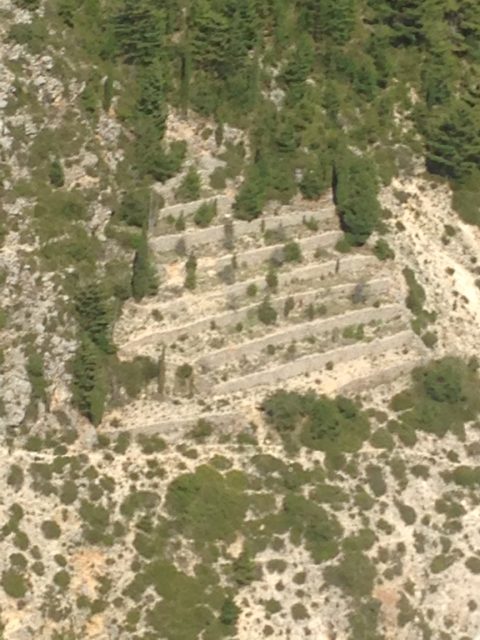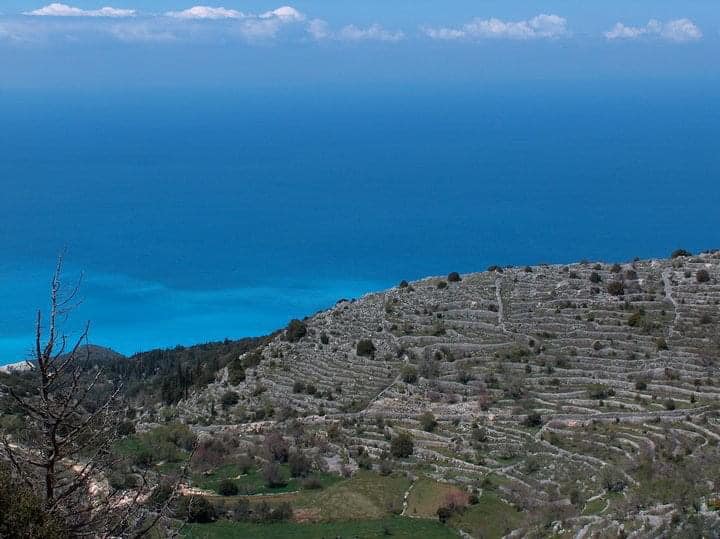Xerolithia

The inhabitants of these settlements, in their attempt to form a small piece of arable land, fought for hundreds years with the rugged and harsh conditions of the sloping slopes using the only material that the earth already offered them, the stones!
They were collecting them one by one and masterfully were constructing the dry terraces in order to hold the soil that was there, otherwise they had to transfer soil from the lower to the higher parts of the under construction terrace. Little by little, they turned the barren slopes of the island into small but arable lands. They were using the terraces as the borders of paths and their properties. Also, they were constructing stables, rural huts, warehouses and more to serve their needs.
No one can appreciate the time, the hands, the effort which is required to form all this vast wild highlands of Lefkada island.
The mechanization of agriculture in the lowlands created conditions of unequal competition with the crops of Lefkada in the terraces that have always been based solely on the intensity of the human labor.
So many years now, the respect and the love for the homeland and in the case of the vineyards the uniqueness of the varieties (vertzami, chlori etc) keeps a few more farmers in to the cultivations in the terraces of the mountainous Lefkada.
With their hands, the shovels and the sprayers on their backs, the farmers compete the plains cultivation with the tractors, the sprinklers, the pruning and harvesting machines.
The acreage yields of the vineyards of Lefkada are also discouraging as their average yield is about 500 kg (because they are dry) while in Thessaly, Peloponnese, Crete they exceed 1,000 kg per acre.

